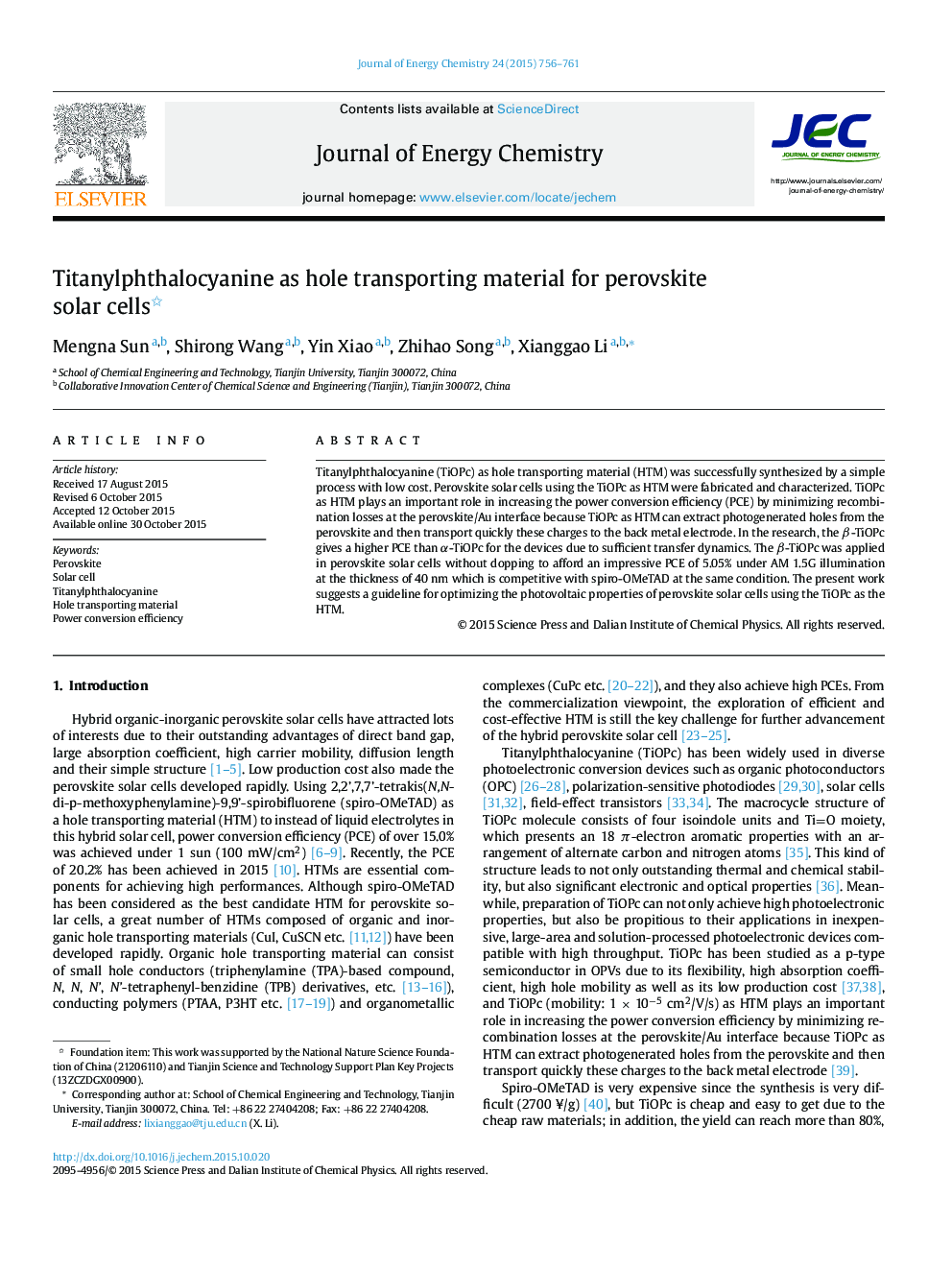| Article ID | Journal | Published Year | Pages | File Type |
|---|---|---|---|---|
| 63800 | Journal of Energy Chemistry | 2015 | 6 Pages |
Titanylphthalocyanine (TiOPc) as hole transporting material (HTM) was successfully synthesized by a simple process with low cost. Perovskite solar cells using the TiOPc as HTM were fabricated and characterized. TiOPc as HTM plays an important role in increasing the power conversion efficiency (PCE) by minimizing recombination losses at the perovskite/Au interface because TiOPc as HTM can extract photogenerated holes from the perovskite and then transport quickly these charges to the back metal electrode. In the research, the β-TiOPc gives a higher PCE than α-TiOPc for the devices due to sufficient transfer dynamics. The β-TiOPc was applied in perovskite solar cells without dopping to afford an impressive PCE of 5.05% under AM 1.5G illumination at the thickness of 40 nm which is competitive with spiro-OMeTAD at the same condition. The present work suggests a guideline for optimizing the photovoltaic properties of perovskite solar cells using the TiOPc as the HTM.
Graphical abstractJ–V curve of FTO/TiO2/CH3NH3PbI3/spiro-OMeTAD/Au solar cell (left) and the molecular structure of TiOPc (right).Figure optionsDownload full-size imageDownload as PowerPoint slide
